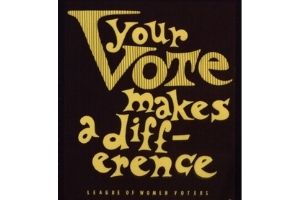Voter Education: Know Your Rights!

Voting can be tricky, especially if it’s your first time voting or if you moved to a new state. Rules and regulations vary from place to place and even depending on the election. Always make sure to do your homework and figure out what you need, whether you’re voting in person or voting via absentee ballot. To get you started, we wanted to share some info about voting laws in Maryland, and the context of these regulations. If you’re from out of state, make sure to check your local Election Board for information and voter education websites to figure out what you’ll need when you visit the polls.
Will I need to show my ID when I go to vote?
In Maryland, most of the time you do not need to show your ID when you vote in person or via absentee ballot, as long as your name is on the list of registered voters. There are a few exceptions, including, if you registered to vote by mail and have not previously met the ID requirements, someone in the polling place challenges your identity, or if you are registering to vote or changing your address during early voting. In Maryland, the following can be used as valid ID:
A Maryland driver’s license or another MVA form of ID
A student ID card that has a photo
An employee ID card that has a photo
A passport or another government-issued ID
Or a utility bill, bank statement, government check, or paycheck that shows your name and address and is less than 3 months old. This option is only if you don’t have the other forms.

If you are showing ID because you are voting for the first time, your name and address on the document must match the information on the voter registration roll. If you don’t have any of these forms of ID on you when you’re at the polling place, don’t worry! You can still vote using a provisional ballot.
Provisional ballots allow people to vote at a polling place even if they’re not on the list of registered voters. As long as the board of elections is able to verify the identity of the person who filled out the provisional ballot, the vote will be counted. If you’re filling out the provisional ballot because you didn’t have ID available at the time of voting, simply bring any form of ID to the local election board.
There are other reasons someone may be asked to fill out a provisional ballot instead of a regular ballot, but as long as you are verified by the election board, your vote counts, regardless of the type of ballot. If you need help with verifying your provisional ballot, contact your election board.
Voter ID laws vary from state to state, but numerous studies have shown that these laws do not actually prevent voter fraud and instead cause voter suppression. Accessing a photo ID requires money and often travel, especially in rural areas, and so Voter ID laws disproportionately affect low-income and minority people. To learn more about Voter ID laws, check out this fact sheet from the ACLU.
What do I do at the polling place?
If this is your first-time voting in person, make sure you follow these guidelines, to ensure that your vote is counted:
Bring a form of ID. As we mentioned above, people voting for the first time in MD will be asked to provide a form of ID.
Do not use your cellphone, cameras, or other computer devices while at the polling place. For privacy and security, keep your cell phone put away until after you leave.
You can bring any materials to help you vote. That includes a sample ballot (such as the ones from the Board of Elections) and any other materials that helped you to make up your mind.
You can bring up to two children with you to vote, as long as they are not disrupting voting procedures. Taking kids to vote is a great way to show them the election process and help educate them on their voting rights!
You can wear politically-themed clothing, such as buttons and t-shirts, but you cannot discuss your vote with others at the polling place.
Once you vote, you must leave immediately.
If you need proof that voted, such as for your employer, you can ask the election judge for a Certificate of Participation.
If you are still in line when the polls close, stay in line! You have the right to vote if you are still in line and you cannot be turned away while waiting.

And make sure to get your “I Voted” sticker to display proudly for the rest of the day!
If I was convicted of a crime, do I have a right to vote?
In Maryland, if you are serving time for committing a felony, you will not be able to vote. However, once you have finished your sentence, your right to vote is automatically returned to you. This rule varies greatly from state to state, ranging from people being able to vote while serving their sentences to those who permanently lose their right to vote because of the crime they committed. (Note that certain crimes, such as buying or selling votes, may cause a permanent loss of voting rights, no matter the state). Disenfranchising people permanently leads to a large proportion of our population to be excluded from participating in our democratic processes. By signaling to people, who are trying to reenter society and reestablish themselves, that their voice doesn’t matter, it makes it harder for them to find security and success.

To find out more about this issue, visit the Brennan Center for Justice’s website about voter restoration laws.
